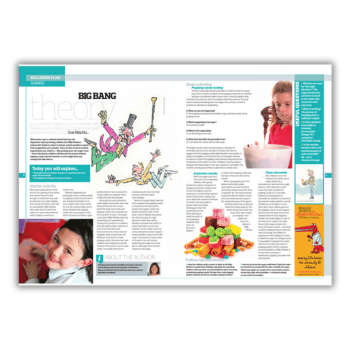What better way to celebrate Roald Dahl Day than by trying some Charlie and the Chocolate Factory science experiments? Inside this free lesson plan is a feast of science-based wonders to spark pupils’ imagination and curiosity.
There are lots of sweet-toothed experiments you could try – like growing your own sugar trees – but in this lesson, children will discover the science behind popping candy. They’ll test whether or not it might have any unexpected side effects.
Learning objectives
- Learn about reversible and irreversible changes to materials
- Apply this knowledge
- Investigate techniques to solve a problem
Charlie and the Chocolate Factory science experiments
Explain that, during the lesson, pupils will be assisting Mr Willy Wonka with some tests to check the safety of a new recipe and how well it is likely to work as a sweet treat.
Without displaying the packaging, take a small quantity of popping candy (around half to one teaspoon) and place it on your tongue.
Open your mouth so that children can hear the sounds. Explain that popping candy was very popular in the 1970s. However, it fell out of favour quite quickly when there were rumours that it caused children to explode when they swallowed it with fizzy drinks!
Although this was entirely an urban legend, the rumour lasted for quite some time. Candy companies did not produce popping candy for a number of years.
In these Charlie and the Chocolate Factory science experiments, pupils must show Willy Wonka, who has something of a reputation for testing such products on children, that the claims made could not be true.
Teaching Award winner Sue Martin has been a primary school deputy head, head of physics at Parkstone Grammar School in Dorset and now works as a science education consultant. Browse more Roald Dahl Day resources.














